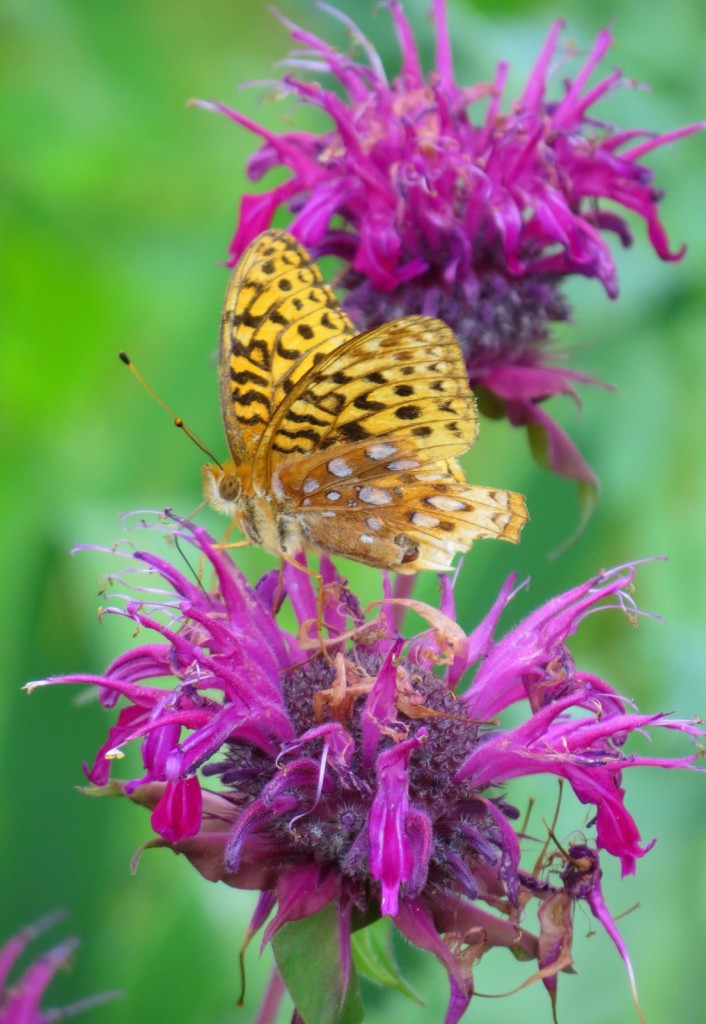
Great Spangled Fritillary on Bee Balm (© Magi Nams)
Last Wednesday, our Northern Hemisphere spring arrived in the midst of a snowstorm followed by a second dump of snow two days later. My flowerbeds and the parkland meadows surrounding my yard are still blanketed with snow today, but my thoughts have jumped ahead to gardening and the abundance of nectar feeders or nectarivores which visit my yard each summer.
I have a dozen flowerbeds scattered around my yard, as well as fruit trees, berry bushes, and a large vegetable garden. All of these, in addition to the natural meadows beyond the yard, attract a variety of butterflies and bees and a healthy population of ruby-throated hummingbirds. Pine and spruce shelterbelts and copses of birches and maples offer shelter and decrease wind speeds, creating a favourable environment for butterflies. The spruces and pines also offer nesting sites for hummingbirds. I’m a stickler for tidiness in my yard, but do leave small patches of ‘weeds’ at the edges to encourage native Nova Scotian butterflies, some of which feed on stinging nettles, thistles, and Dutchman’s breeches.
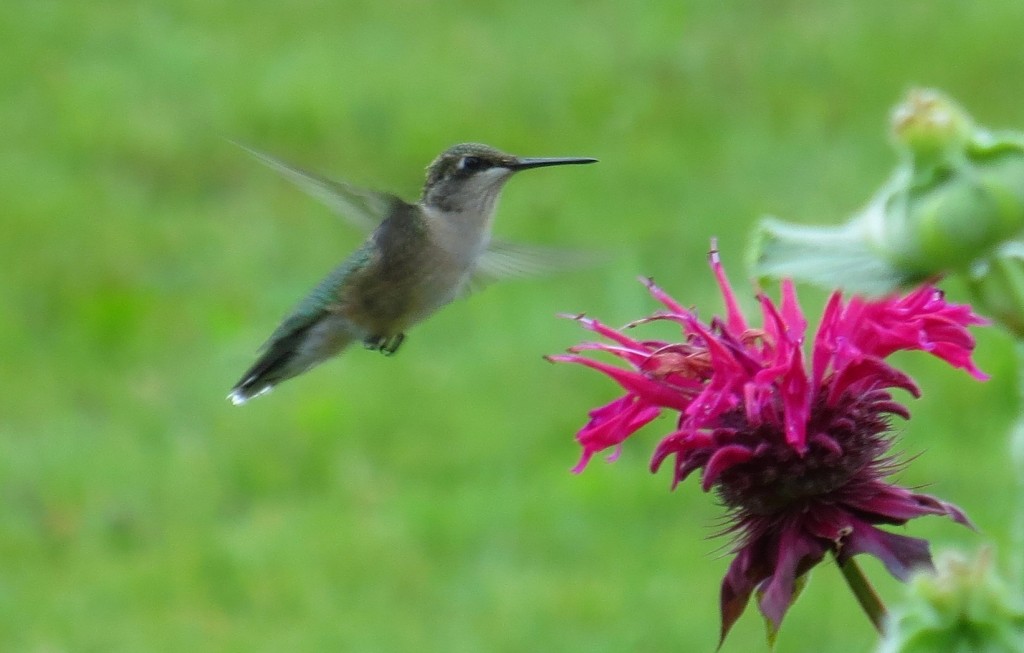
Ruby-throated Hummingbird and Bee Balm (© Magi Nams)
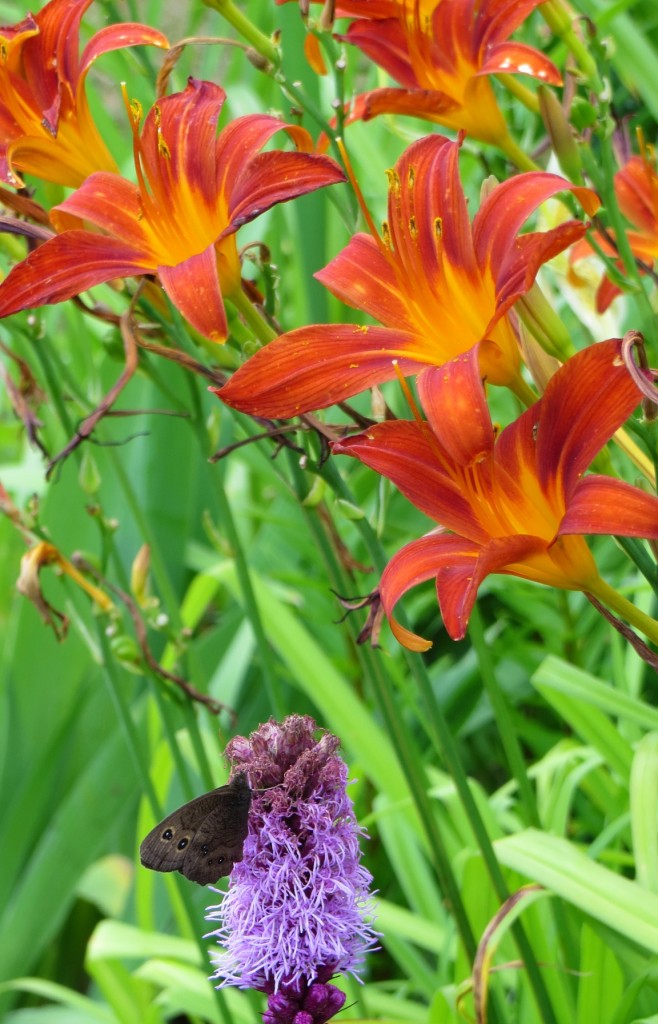
Common Wood Nymph on Purple Blazing Star (© Magi Nams)
The purple blossoms of common garden chives are an excellent spring source of nectar for insects, as are lilac flowers. Lilacs serve as dual-purpose butterfly plants, providing nectar for adults and food for tiger swallowtail caterpillars. Other dual purpose plants are chokecherries, willows, mountain ashes, apples, and clovers.
In addition to chives, the most highly favoured nectar providers in my flowerbeds include bee balms in various colours (hot pink and red are the most attractive to hummingbirds), purple blazing stars, purple cone flowers, old-fashioned single hollyhocks, yarrow, and snap dragons. Hummingbirds love the hollyhocks, and I’ve watched fat bumblebees muscle open snapdragon flowers to plunder their sweet reserves, the bees exiting with hairy thighs dusted with golden pollen. Dianthus, lilies, tiger lilies, shasta daisies, turtlehead, and blanket flowers are also good sources of nectar. Last autumn, I planted yellow, white, pink, and orange butterfly plants (Asclepias) and hundreds of bulbs, including crocuses, which will provide the earliest nectar in my yard. I’m keen to see if these additions attract more bees and new butterflies.
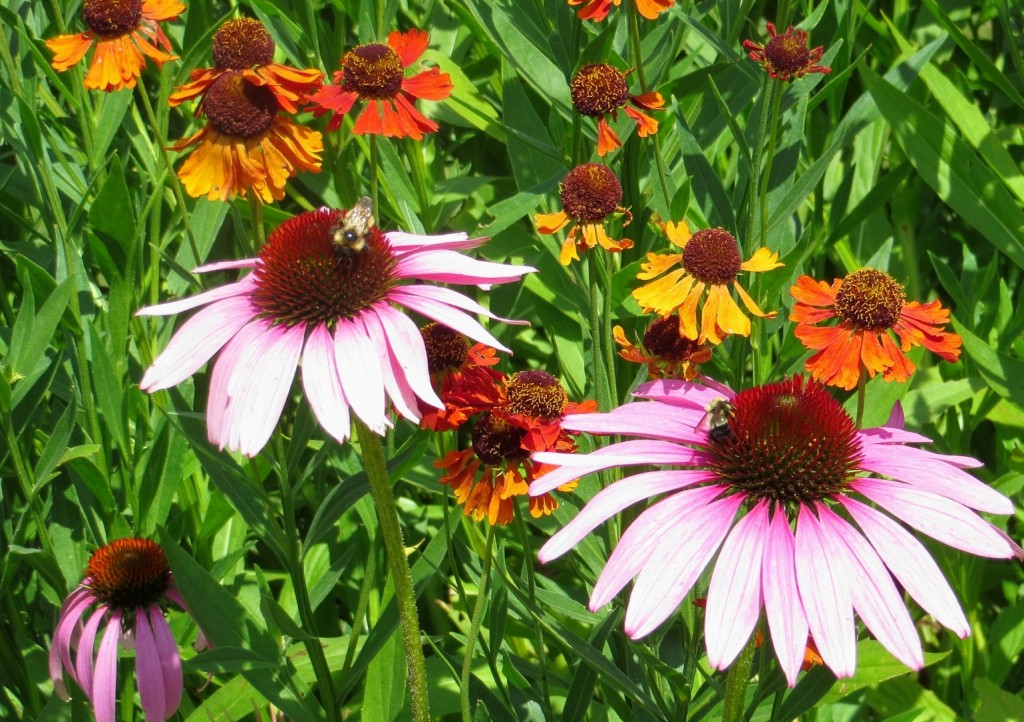
Bees Feeding on Purple Coneflowers (© Magi Nams)
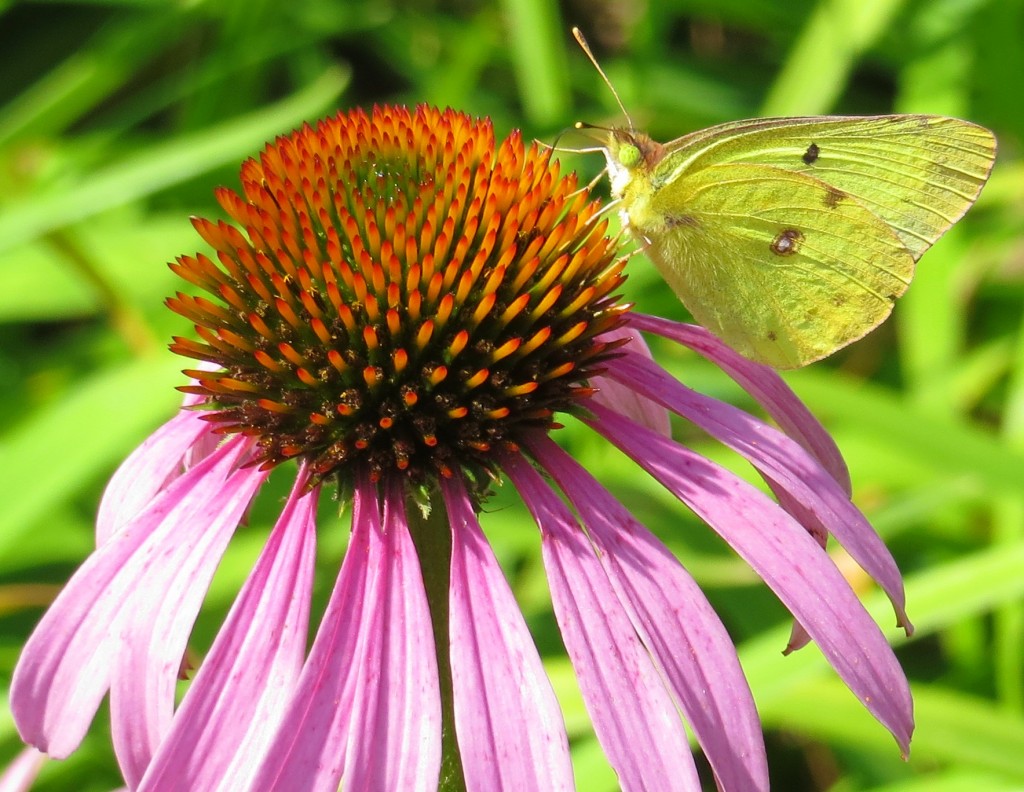
Clouded Sulphur on Purple Coneflower (© Magi Nams)
Depending on their life cycles and migration patterns, different butterfly species occur in my yard at different times during the growing season. To encourage the greatest variety of butterflies, I provide nectar from spring through autumn, having an assortment of nectarivore-attracting plants, some of which bloom in spring (such as chives), some in summer (such as bee balms), and some in autumn (such as tiger lilies and turtleheads), plus the afore-mentioned ‘weeds’.
The blossoms of fruit trees and berries attract bees, flies, and other pollinators. This spring, I’ll put out blocks of wood drilled with holes to encourage orchard mason bees to lay eggs in them and thus increase the population of this non-aggressive, highly beneficial bee species in my yard. Orchard mason bees are more tolerant of cold than other pollinators, which is something I need in my mini-orchard, where spring is often accompanied by cool temperatures and blustery winds.
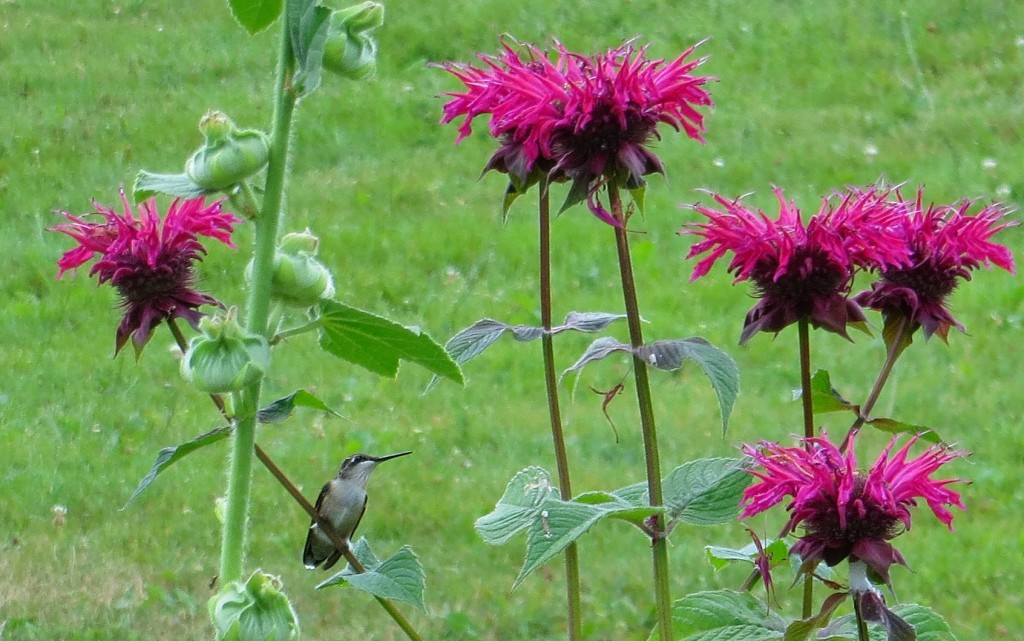
Ruby-throated Hummingbird and Bee Balm (© Magi Nams)


